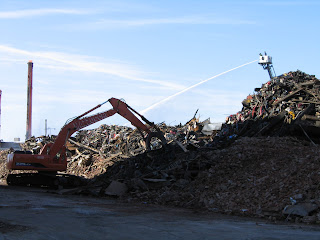In our current newsletter (find it at
www.futureenv.com), we discuss the hazards of toxic
dust at
demolition and disaster sites. Three new studies from
California seem to support my points regarding the dangers of the dust.
Indoor Environment Connections in the
February 2012 issue discusses the findings of these studies linking exposure to fine-
particulate matter to
heart disease.
These study defined particulate matter as a complex blend of substances ranging from dry solid fragments, solid-core fragments with liquid coatings and small droplets of liquid. These particles vary in shape, size and chemical composition, and can contain metals, soot, nitrates, sulfates, and very fine dust. One source of particulate matter, including PM2.5 or fine-particulate matter is exhaust from vehicles, especially
diesel engines (which are used frequently on demolition and disaster sites). PM2.5 is particulate matter smaller than 2.5 microns in diameter (making this particulate matter a respirable dust or dust that can enter into the deep lungs).
The
California Air Resources Board (ARB) released three new studies, that indicate exposure to airborne fine-particulate matter significantly elevates the risk of premature deaths from heart disease among older adults and elevates incidence of strokes among
post-menopausal women. The third study examined platelets of mice exposed to PM2.5. This study found that the exposed mice showed
platelet activation which could promote clotting and lead to stroke and heart attacks. These studies add to the existing scienctific evidence that respirable airborne particulates pose a threat to
public health. If these particles pose a threat to public health, what about the threat to workers who are exposed to PM2.5 at their worksites?
These studies further support my call, for the requirement that workers wear respirators on all demolition and disaster sites.




No comments:
Post a Comment